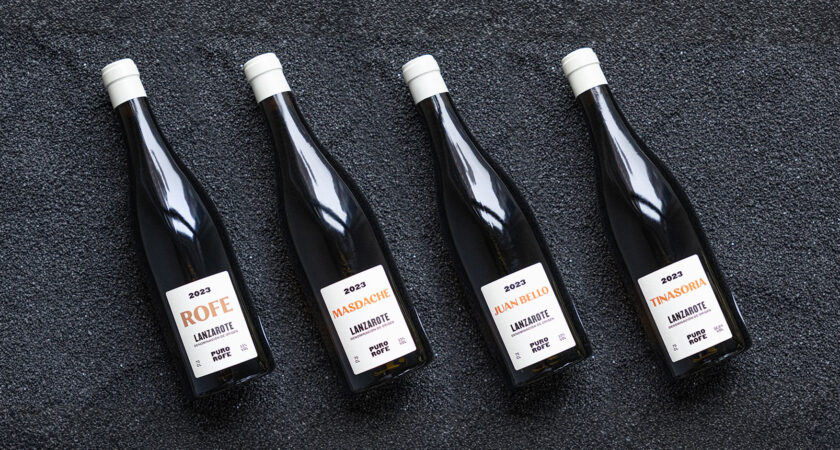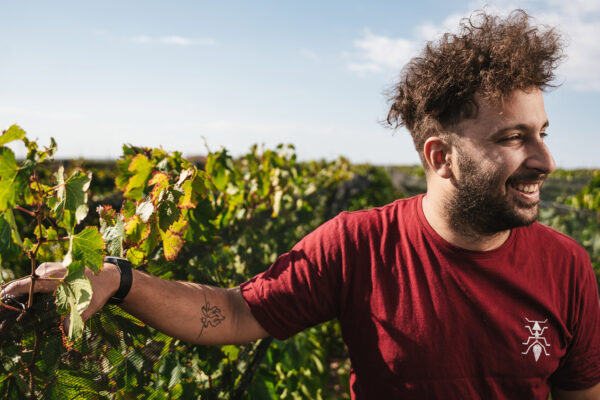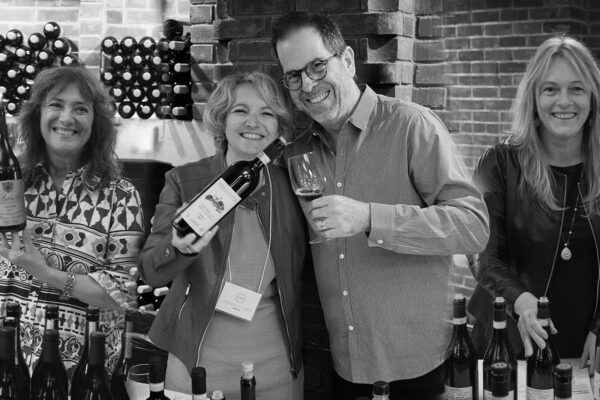In the last of our three-part series exploring Azores and Canary Islands wineries, we head to Puro Rofe the otherworldly island of Lanzarote, where old vines adapted to the hostile landscape to produce small quantities of extraordinary wines.
In 2017, Rayco Fernández had a problem.
At the time, this native of Las Palmas de Gran Canaria was running one of the Canary Islands’ most respected fine-wine distributorships (he was Envínate’s first distributor in Spain), so he knew the local terroir as intimately as anyone. Lanzarote island in particular captivated him, specifically the zone of La Geria: the iconic, lunar landscape of pure black volcanic lapilli studded with conical pits created to protect grapevines from whipping wind and funnel precious water down to their roots. It’s an incredible terroir, potentially a great one, and he wanted to represent a truly great wine from the zone. Trouble was… there wasn’t one.
So he decided to create it.
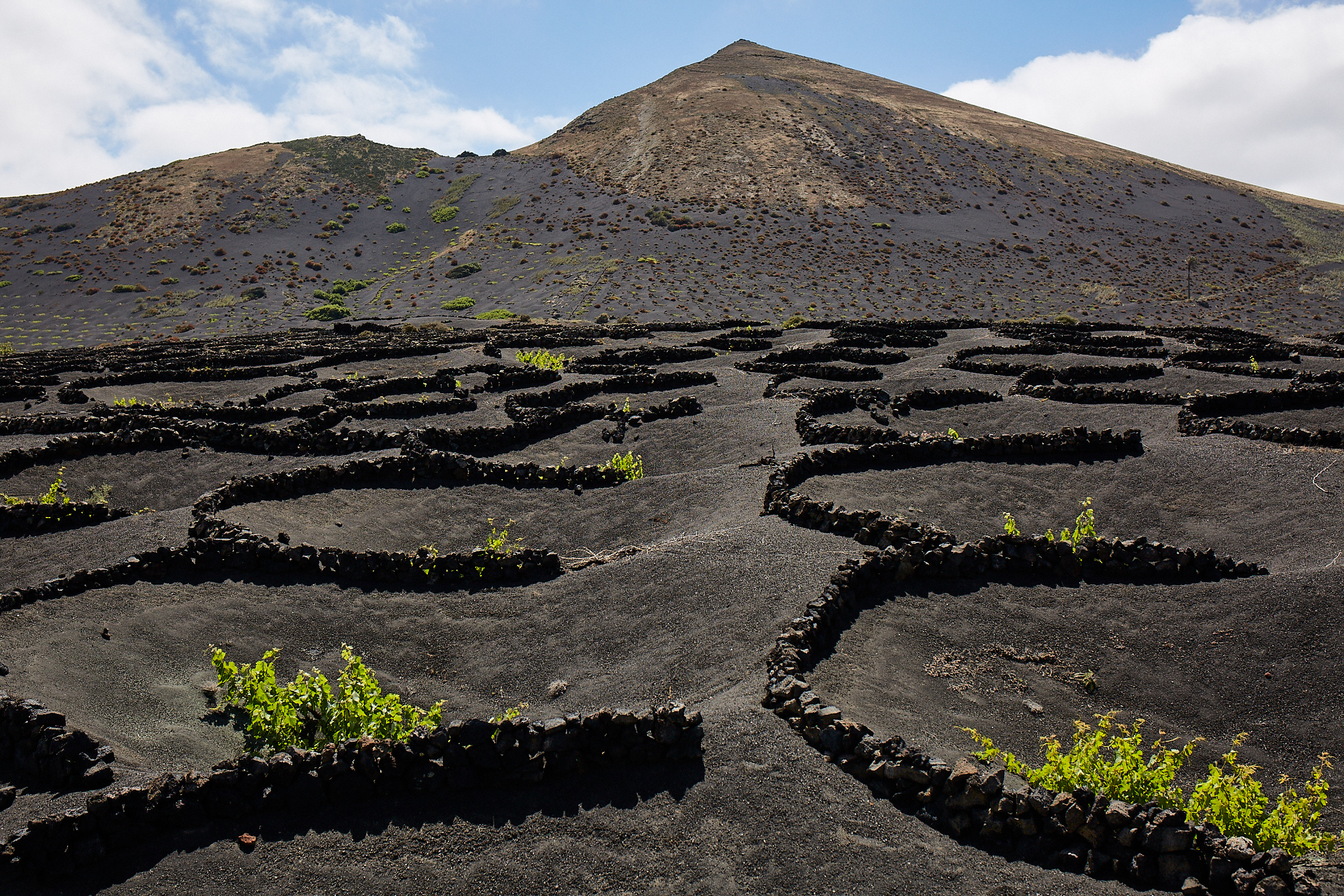
His bodega, Puro Rofe (rofe is the local term for the volcanic soil encountered in La Geria and the surrounding villages) is now, after seven vintages, considered to be the single highest-quality wine project on the island of Lanzarote.
The recipe starts pretty simply: this is the only winery on the island that sources all of its grapes from old vines (mostly 60- to 100-plus years) cultivated organically in hoyos (the emblematic conical pits) and arenado (a lesser-known but equally traditional method in which volcanic lapilli are manually laid over organic soil and surrounded with U-shaped stone walls). The resulting wines are arrestingly unique: salty, ashy, laserlike, and concentrated.
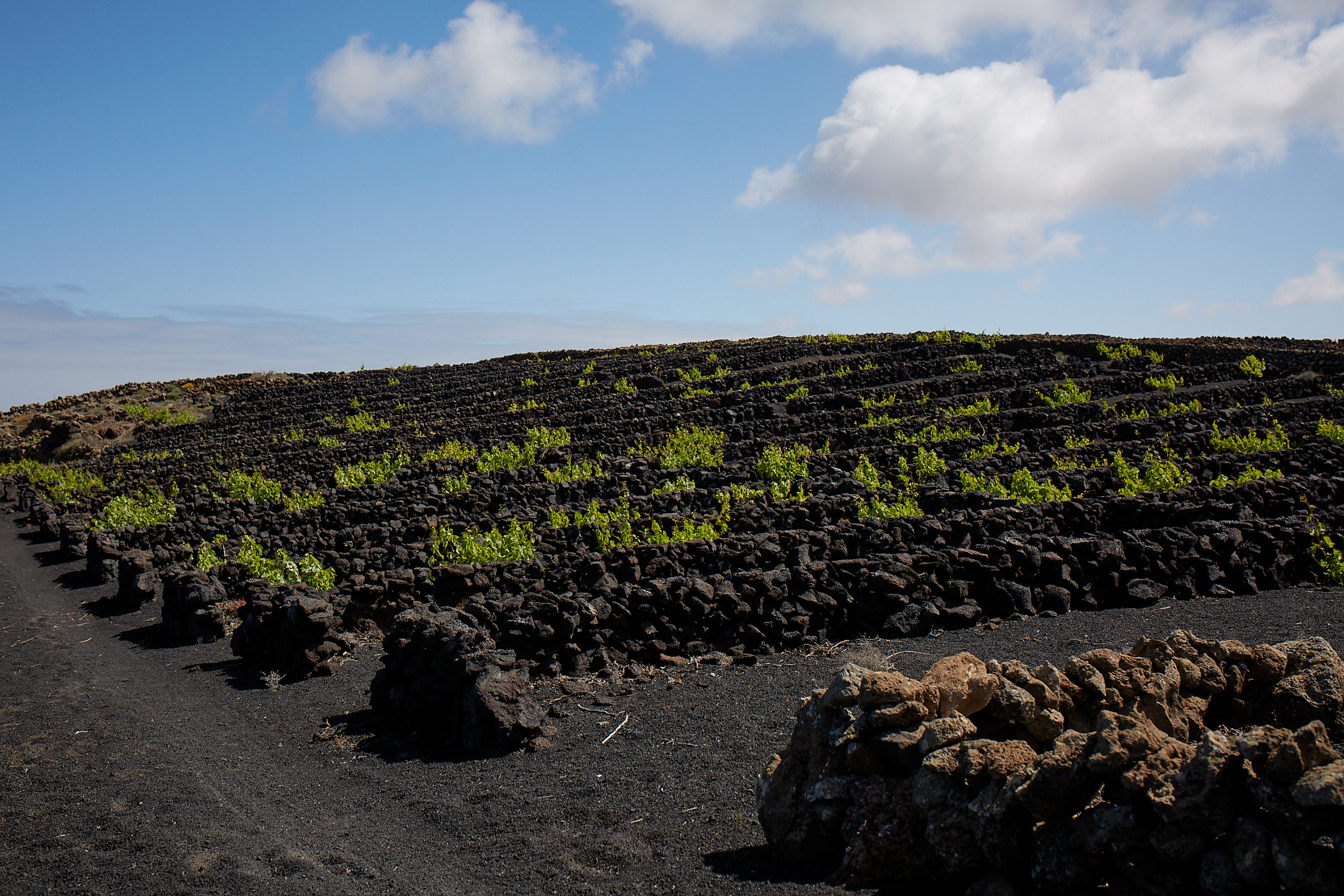
The project began in ’17 as a micro-négoce, with the idea of paying a fair price for high-quality organic grapes, and it continues as such today, with the exception of one spectacular domaine vineyard—more on that later. For the most part, the wines represent the loving (and, sadly, disappearing) cultivation of growers like Ascención Robayna (the single most emblematic organic grower in the Canary Islands), Chicho Mota, and a handful of others. The entire production of these precious vines in an average year is a scant 20,000 bottles. Sourcing as he does from about 30 hectares in total, that works out to an average annual yield of five hectoliters/hectare, or less than a third of a ton per acre(!).
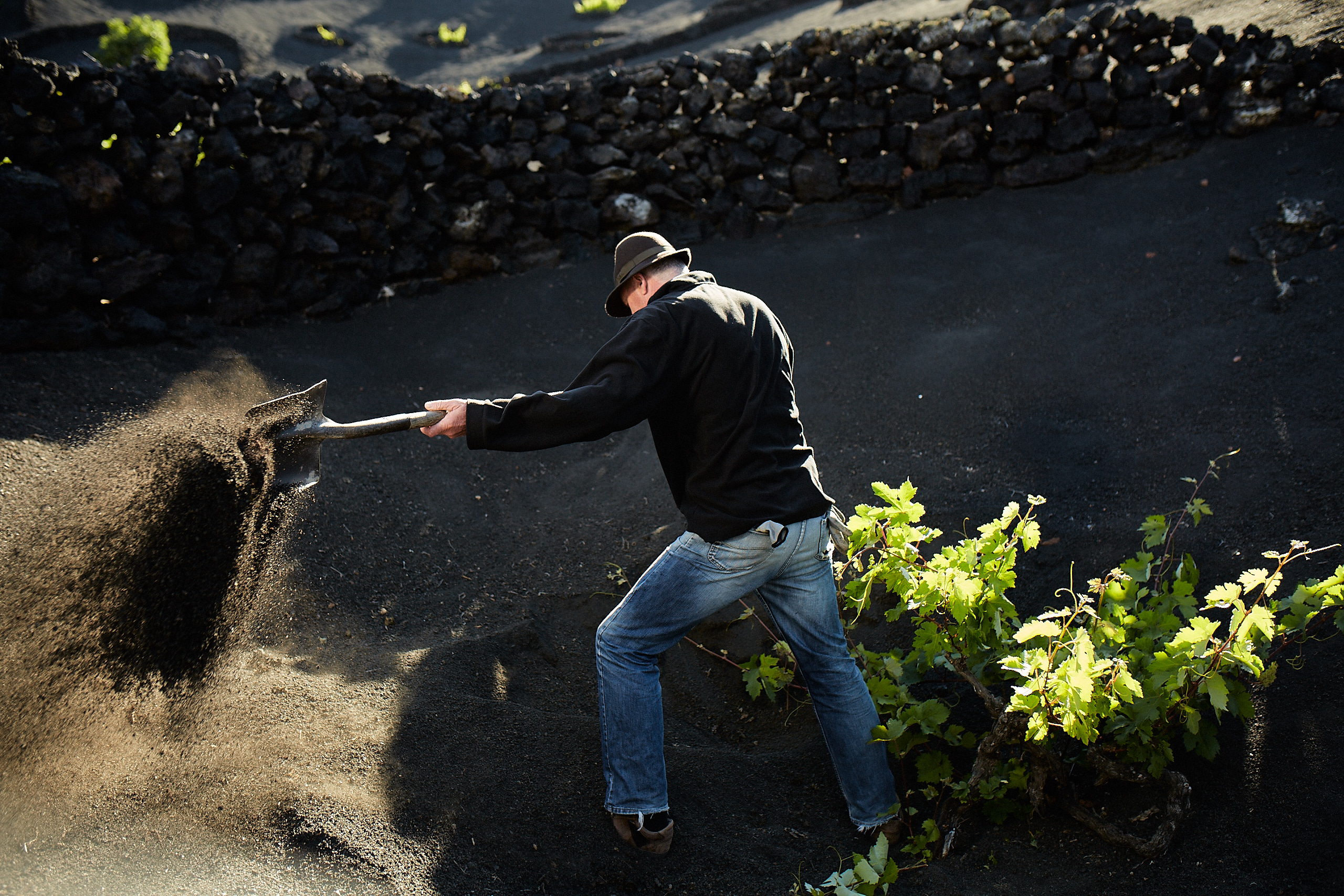
Intimately acquainted with the great wines from around the world from his prior career as a merchant, Rayco employs a simple but exacting vinification in a tiny minimalist cellar: gentle whole-cluster pressing, spontaneous fermentation, elevage in a combination of steel and neutral French and Austrian oak, and bottling without fining or filtration. The majority of grapes coming in are the local variety of malvasia so beautifully adapted to this harsh landscape: Malvasía Volcánica. Smaller amounts of Diego (often known Vijariego/Vijiriego or related names) and Listán Blanco (Palomino) also figure in white. Small quantities of red grapes persist, but, unlike Tenerife, this is very much a white-wine-dominant island.
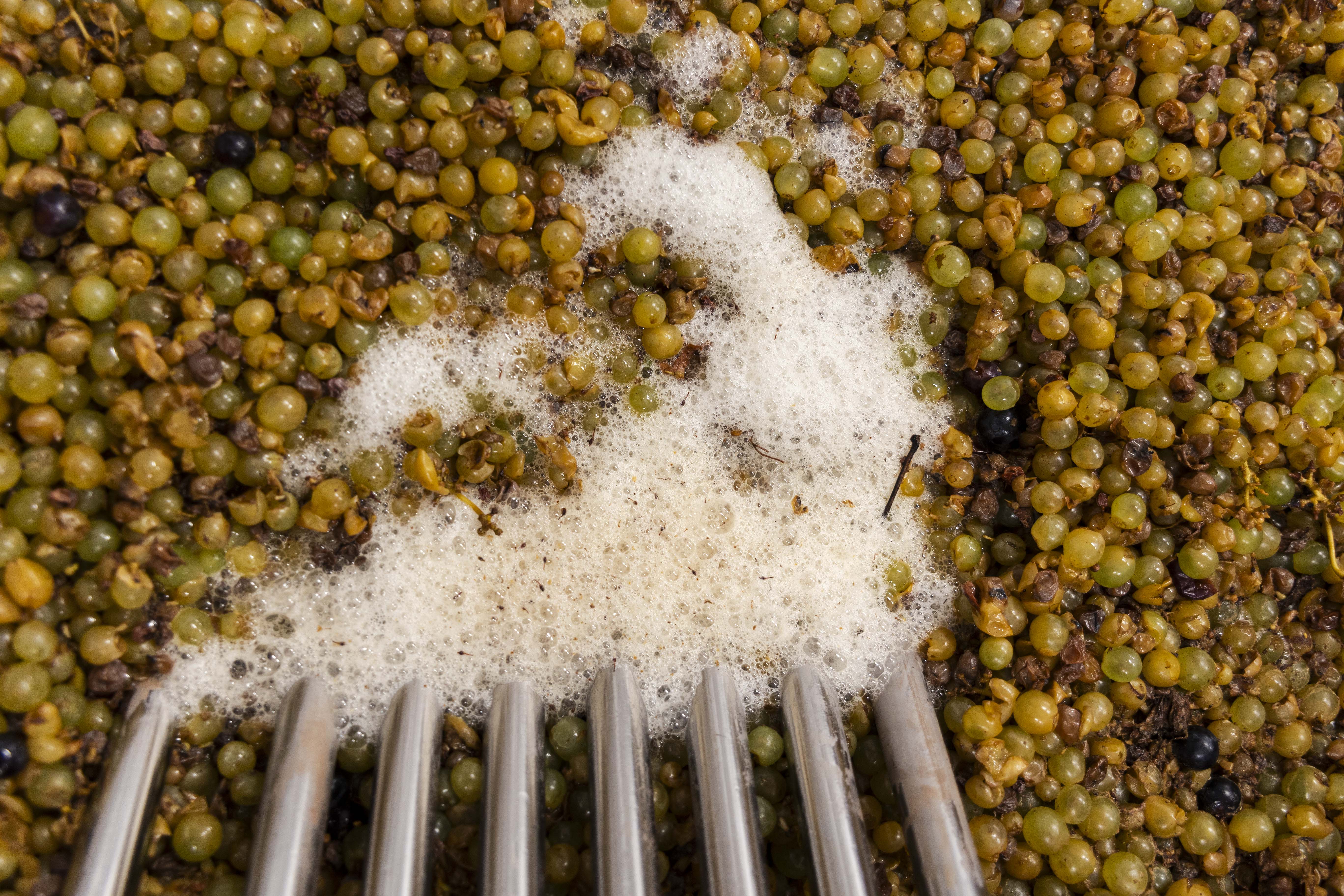
The 2023 Puro Rofe offering is anchored by an estate blend called simply Rofe, sourced from the largest range of vineyards and intended to provide the most compelling one-stop snapshot of Lanzarote white possible. There are several single-paraje (the untranslatable Spanish term for a ‘vineyard area’—lieu-dit, perhaps?—larger than a tiny parcel) wines like Masdache, sourced from a village of the same name, and Juan Bello, from the north-facing slopes of a volcanic cone nearby. The collection is crowned by Tinasoria, a high-altitude treasure sourced from a parcel inside the crater of a windswept volcano. Rayco is proud to have bought this parcel in 2021 and produced his first vintage of it in 2022.
THE WINES
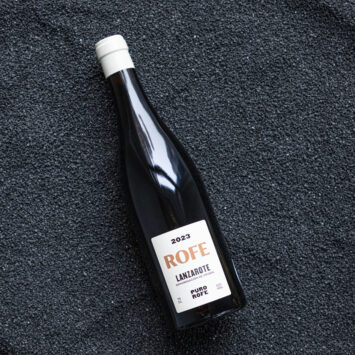
Lanzarote Blanco ‘Rofe’ Puro Rofe
- 70% Malvasía Volcánica, 20% Listán Blanco (Palomino) and 10% Diego
- Sourced from a variety of 60-100+ year-old parcels in pure black volcanic lapilli
- Fermented spontaneously
- Raised for 8-9 months in 50% tank and 50% neutral 500L French and Austrian barrels
- Unfined and unfiltered
- In Organic Conversion (ICCIA)
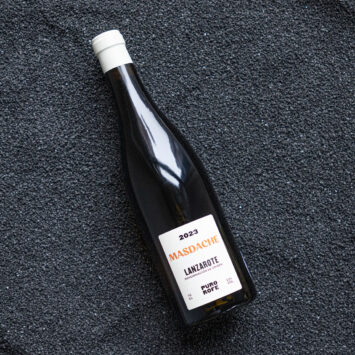
Lanzarote Blanco ‘Masdache’ Puro Rofe
- 60% Malvasía Volcánica and 40% of Diego and Listán Blanco
- Sourced from 100+ year-old vines planted entirely in hoyos in the village of Masdache
- Fermented spontaneously in neutral oak
- Raised for 8-9 months in three neutral 500L French-oak barrels
- Unfined and unfiltered
- Certified Organic (ICCIA)

Lanzarote Blanco ‘Juan Bello’ Puro Rofe
- A Malvasía-Volcánica-dominant blend with smaller parts of Diego and Listán Blanco
- Sourced from 100+ year-old vines planted entirely in hoyos on the north slopes of the Juan Bello volcano at 350 meters
- Fermented spontaneously in neutral oak
- Raised 8-9 months in three neutral 500L French-oak barrels
- Unfined and unfiltered
- Certified Organic (ICCIA)
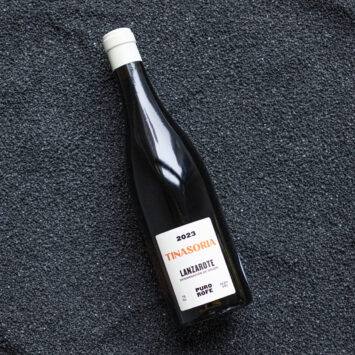
Lanzarote Blanco ‘Tinasoria’ Puro Rofe
- 100% Malvasía Volcánica
- Sourced from a parcel of 100+ year-old vines planted at 500 meters inside the crater of the Montaña de Tinasoria, the highest volcano in La Geria
- Fermented spontaneously
- Raised 8-9 months in a single neutral 500L French-oak barrel
- 600 bottles produced
- In Organic Conversion (ICCIA)




